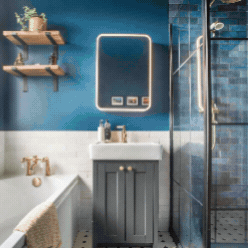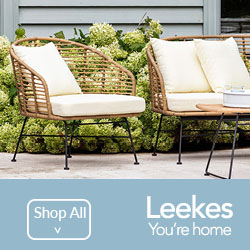In case you missed it see what’s in this section
Let's Talk
Retail of Tomorrow: Smart Fixtures and Displays for the Digital Shopper
Technology enabled integration is transforming the retail industry with the integration of technology in the new marketplace with consumer expectations of seamless shopping experience. Today, in this dynamic retail landscape, store fixtures and retail displays have progressed from being just a means to a functionality to the keys to store engagement and personalization with the ability to become engaging tools for brand storytelling as well. This article looks at how smart fixtures and new displays are transforming retail spaces, creating more adaptive and digital shopper appropriate settings.
Understanding the Rise of the Digital Shopper
Consumers are not only shopping, but they are after experiences. A digital shopper is a shopper who uses technology to discover, compare, and buy products on and offline. Omni channel strategies allow retailers to blend the physical and the digital, giving rise to a unified shopping experience. This evolution is forcing us to rethink how we design store fixtures and retail displays that are both functional and interactive.
There are key characteristics of the digital shopper.
Tech-Savvy: Digital shoppers are no strangers to smartphones, apps and other tech that makes shopping easier.
Experience-Driven: And they want to be engaged creatively, whether in-store or online.
Personalization-Seeking: Personal recommendations and shopping environments are preferred by digital shoppers based on their preferences.
Smart Fixtures: A Foundation of Tomorrow’s Retail Spaces
Retail store fixtures that are smart are changing the way products are displayed and used in retail spaces. Sensors, digital and IoT screens are integrated into these fixtures to generate a dynamic shopping experience.
Features of Smart Store Fixtures
Interactive Displays: Touchscreens or AR (Augmented Reality) feature in these displays so shoppers can see products in other settings or with personalizations.
Real-Time Data Integration: Smart fixture can link up to inventory management system to receive immediate stock levels and shopping.
Sustainability: Consumer demand for sustainability often extends to the frame work in modern store fixtures which are almost always designed with eco-friendly materials, and energy efficient technologies.
Smart Fixtures in Action
Smart Mirrors: Known for use in fashion retail, these mirrors use AR to lend shoppers an opportunity to virtually try on clothes or accessories.
Interactive Shelving: When products are picked up from shelves they are equipped with sensors which can detect this and show the relevant product data on a screen.
Dynamic Pricing Displays: Digital price tags that update themselves automatically based off of promotions, discounts, stock levels, traffic counts, engagement rates, sales, adherence to regulations…
Retail Displays: Captivating Experiences Creation
Visual merchandising successfully revolves around innovative retail displays. It makes them attention grabbing, they make you know what your brand is about, and they help you promote your products. With digital shoppers, displays can no longer be static arrangements, they need to tell story with interactivity given value.
Trends in Retail Displays
Immersive Experiences: Today, displays show VR (virtual reality), holograms or multimedia presentations to captivate and attract.
Pop-Up Innovations: They are also becoming increasingly popular because they offer temporary retail spaces for creative displays that are exclusive and novel.
Hybrid Designs: Using physical (e.g. QR codes, NFC tags) and digital elements (e.g. NFC tags) to combine the audience real-life in front of the screen and real screen on their phone.
Retail Displays for Enhancing the Customer Engagement
Storytelling Displays: Displays are used by brands to tell their story, talk about craftsmanship, or explain the lifestyle their products support.
Personalized Displays: Displays will adapt relative to the customer profile or shopping behavior for a unique experience for each shopper.
Interactive Elements: Interactivity includes touchscreen kiosks as well as gratified displays that pull in consumers to get into a deeper form of engagement with the brand.
We consider the role of data in smart retail.
Data collected via smart store fixtures and retail displays not only contribute to the shopping experience given, but can also be valuable to the retailer. Retailers can get rid of insight in to customer’s preferences, their behavior and trends by analyzing customer interactions.
Data Driven Retail Applications
Inventory Management: Smart fixtures fill out data and ensure that the right thing is available, at the right time and with the right quantity, reducing waste and increasing availability.
Personalized Marketing: Retailers use customer data to personalize promotions and recommendations for each shopper.
Optimized Layouts: Using heat maps and traffic data can help generate better store layouts and of course better store display placements.
Benefits you can expect to derive from your Smart Fixtures and Displays
Enhanced Customer Experience: Through smart technologies, shopping is become more interesting, more convenient and more fun.
Increased Sales: Has an interactive display that encourages impulse purchases and appropriate higher conversion rates.
Brand Differentiation: They do this in a competitive market by offering innovative fixtures and displays that set brands apart.
Sustainability: Modern consumer values fit well with eco-friendly materials and energy efficient technologies.
Overcoming Challenges
While the benefits are clear, implementing smart store fixtures and retail displays comes with challenges:
Cost: Definitely, some smaller retailers will face an initial investment problem.
Technical Integration: Such a robust infrastructure is needed to ensure that there is seamless connectivity, between different systems.
Staff Training: Smart technology use and maintenance need to be trained to employees.
Future Prospects: What’s next?
To create this new kind of retail future, we will need to create the adaptable, tech enabled customer centric spaces. Some emerging trends include:
AI-Powered Fixtures: We will see more of artificial intelligence playing into personalizing shopping experiences and optimizing operations.
Sustainability at Scale: You can expect more retailers to use recycled materials, along with energy efficient designs.
Augmented Reality Displays: Retailers will soon be able to bring immersive and interactive experiences to scale using AR.
Seamless Omni channel Integration: The between with the online and the offline, a true online shopping experience will be created by fixtures and display.
Conclusion
Retailers who use smart store fixtures and innovative retail displays are no longer optional—it’s an essential tool to meet the expectations of the digital shopper. The integration of technology, creativity and sustainability allows these elements to not only make shopping an enhanced experience, but to also make business growth. The future of retail will be as dynamic and exciting as the digital shoppers it serves, as retailers continue to innovate.
Weather in Swindon
Listings




















